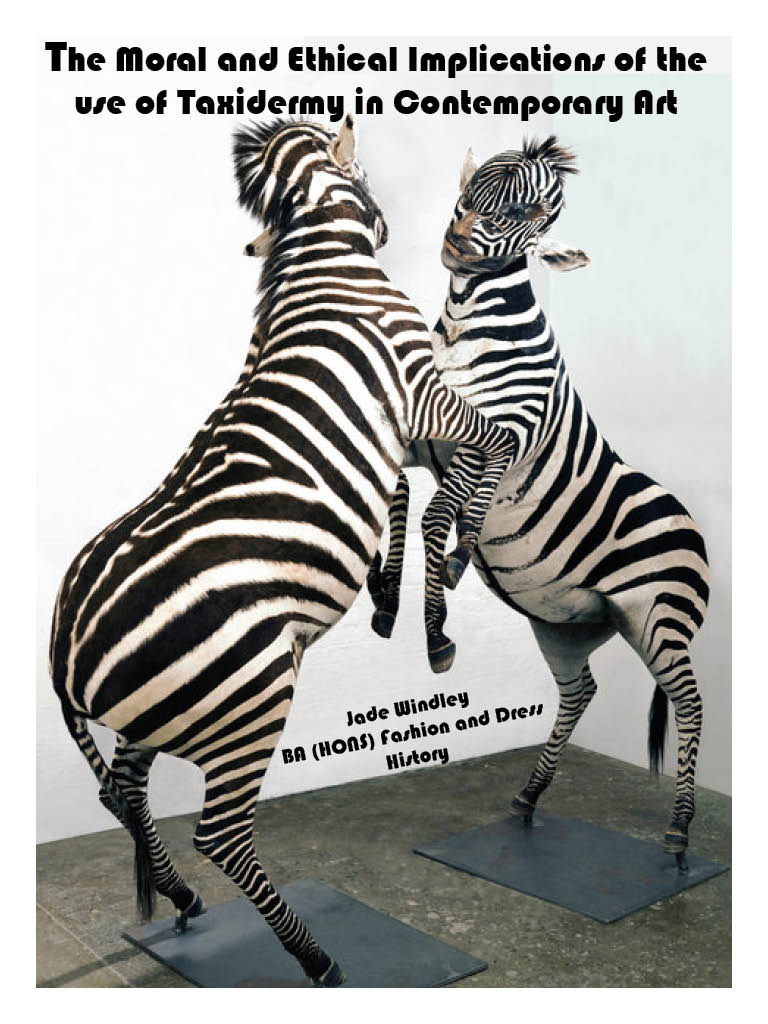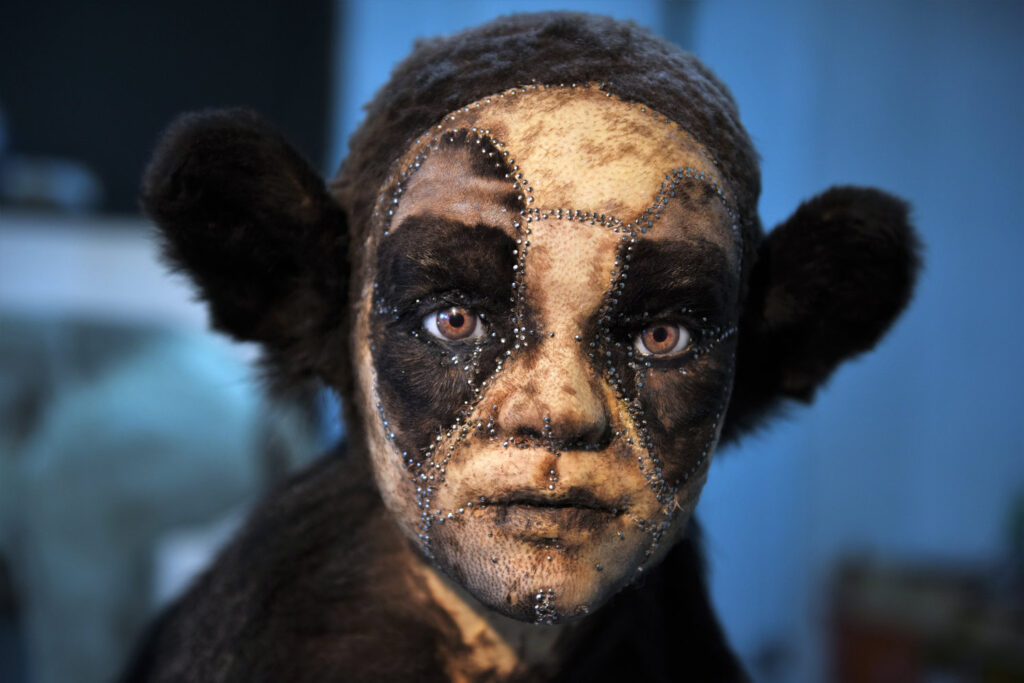
‘Taxidermy, as a process, was an essential tool for naturalists and artists alike, it allowed them to acquire knowledge of their internal and external form and share it with others.’ The earliest examples of taxidermised specimens were found in the cabinet of curiosities in the 16th century, which reflected an increased scientific interest in the natural world. Taxidermy, however, did not reach its peak until the late 18th to 19th Century. This obsession with taxidermy did not last. With growing animal rights movements, by the 1950s to the early 1960s taxidermy was no longer fashionable. Recently, however, taxidermy has crept back into contemporary museum spaces with a new wave of ‘ethical’ taxidermists. It is for this reason that this dissertation questions contemporary attitudes towards taxidermy and the moral and ethical implications of it.
The dissertation looks at three contemporary artists who use taxidermy as their principle medium; Kate Clark, Thomas Grünfeld and Claire Morgan. It utilises primary sources including an interview with Kate Clark, Claire Morgan’s exhibition As I Live and Breathe and Thomas Grünfeld’s book Misfits I – VII. These are contrasted alongside ethics theories sourced from The Oxford and Routledge Handbooks of animal ethics. The research uncovers the evolution and inconsistencies of ethical practices of contemporary taxidermists and further helps to develop our understandings of the importance of an ethical ‘meaning’ to taxidermy.

Kate Clark, Behaving (detail). 2016. Bear hide, clay, foam, thread, pins, rubber eyes. 66 x 26 x 26 inches. Brooklyn, NY.

Thomas Grünfeld, Misfit (St Bernard & Sheep). 1994. Taxidermy.

Thomas Grünfeld, Misfit (Bat & Fawn). 1996. Taxidermy. Germany.

Claire Morgan, As I Live and Breathe. 2020. Personal photograph by author. 12 January 2020.